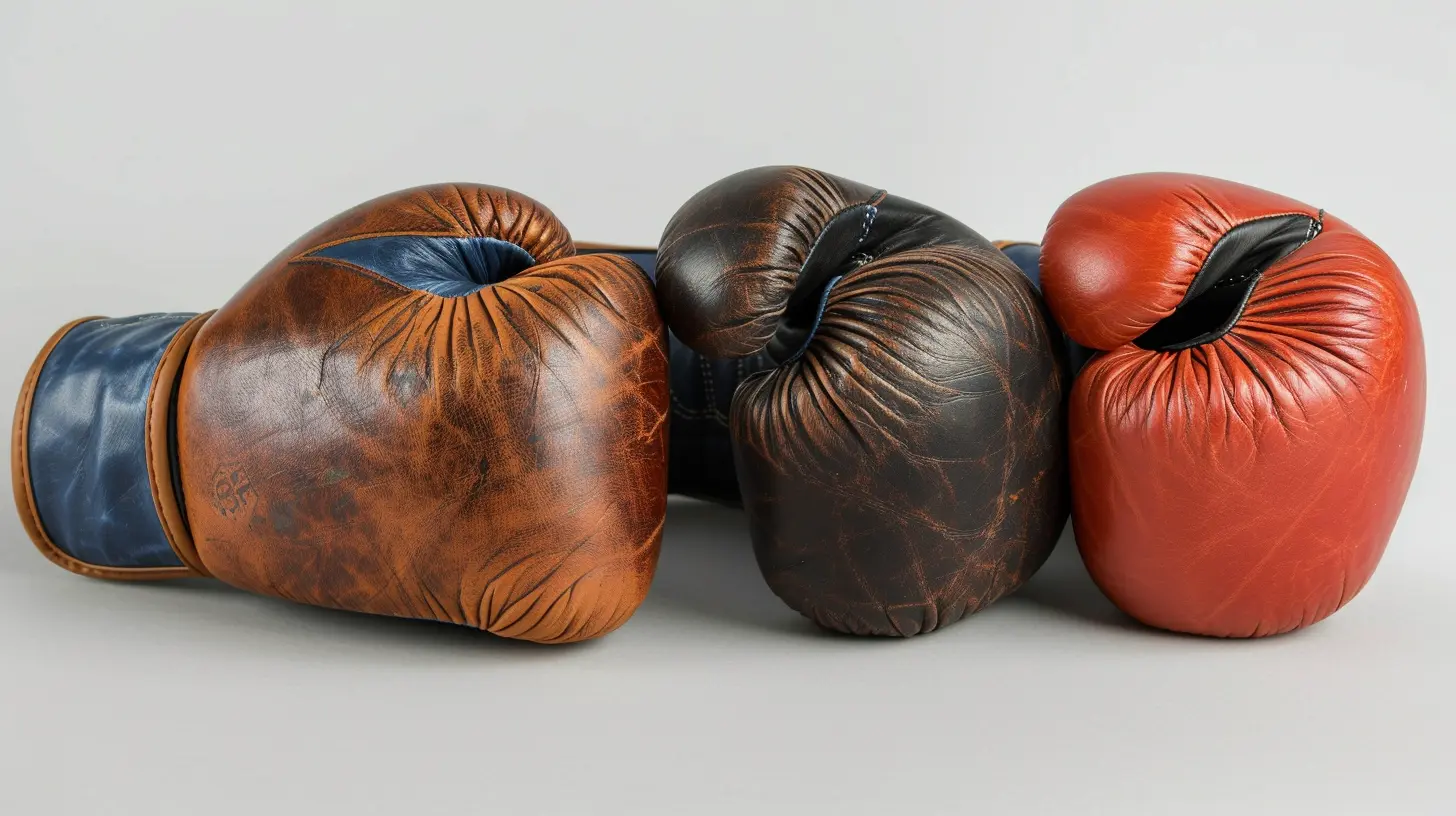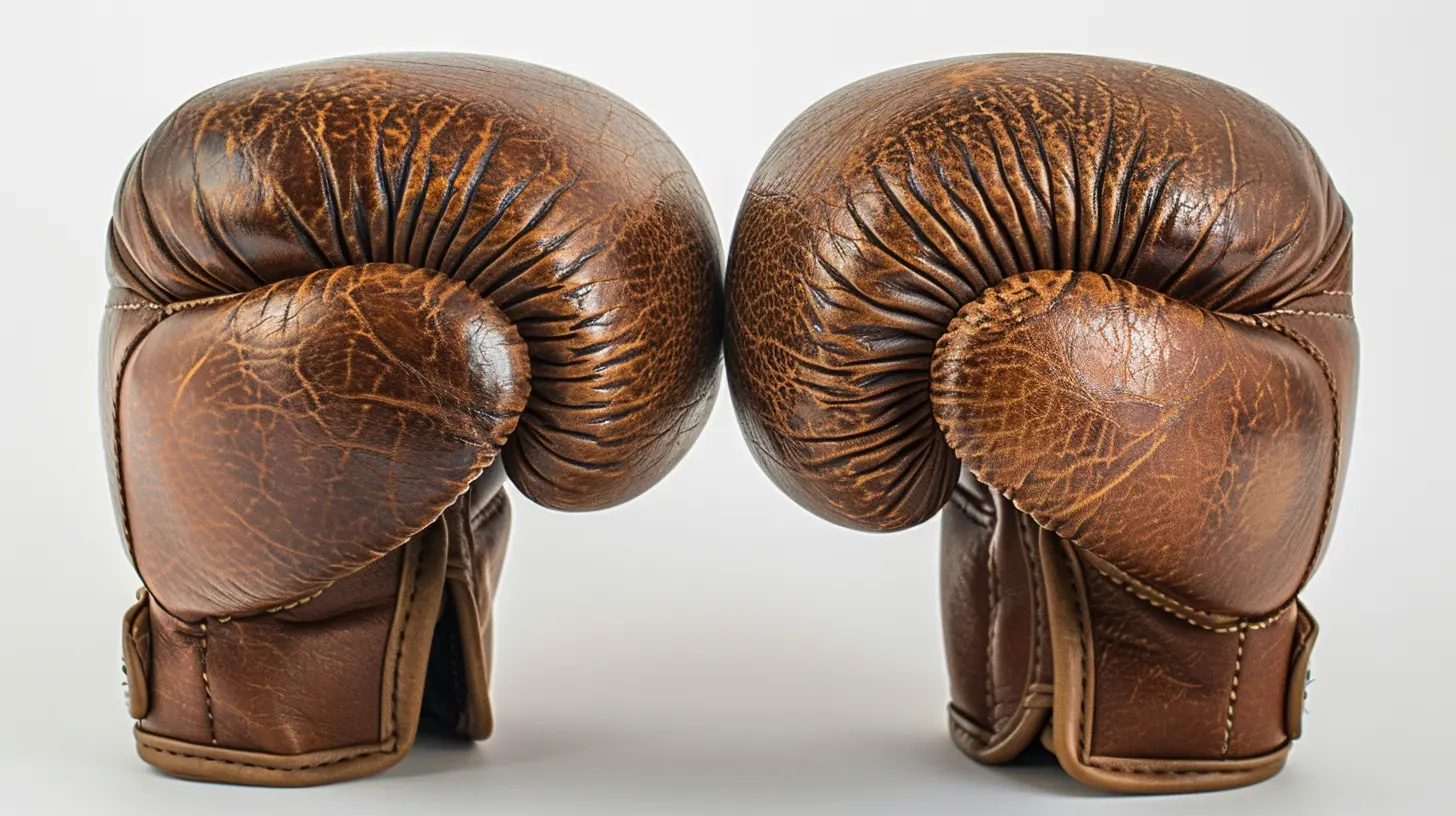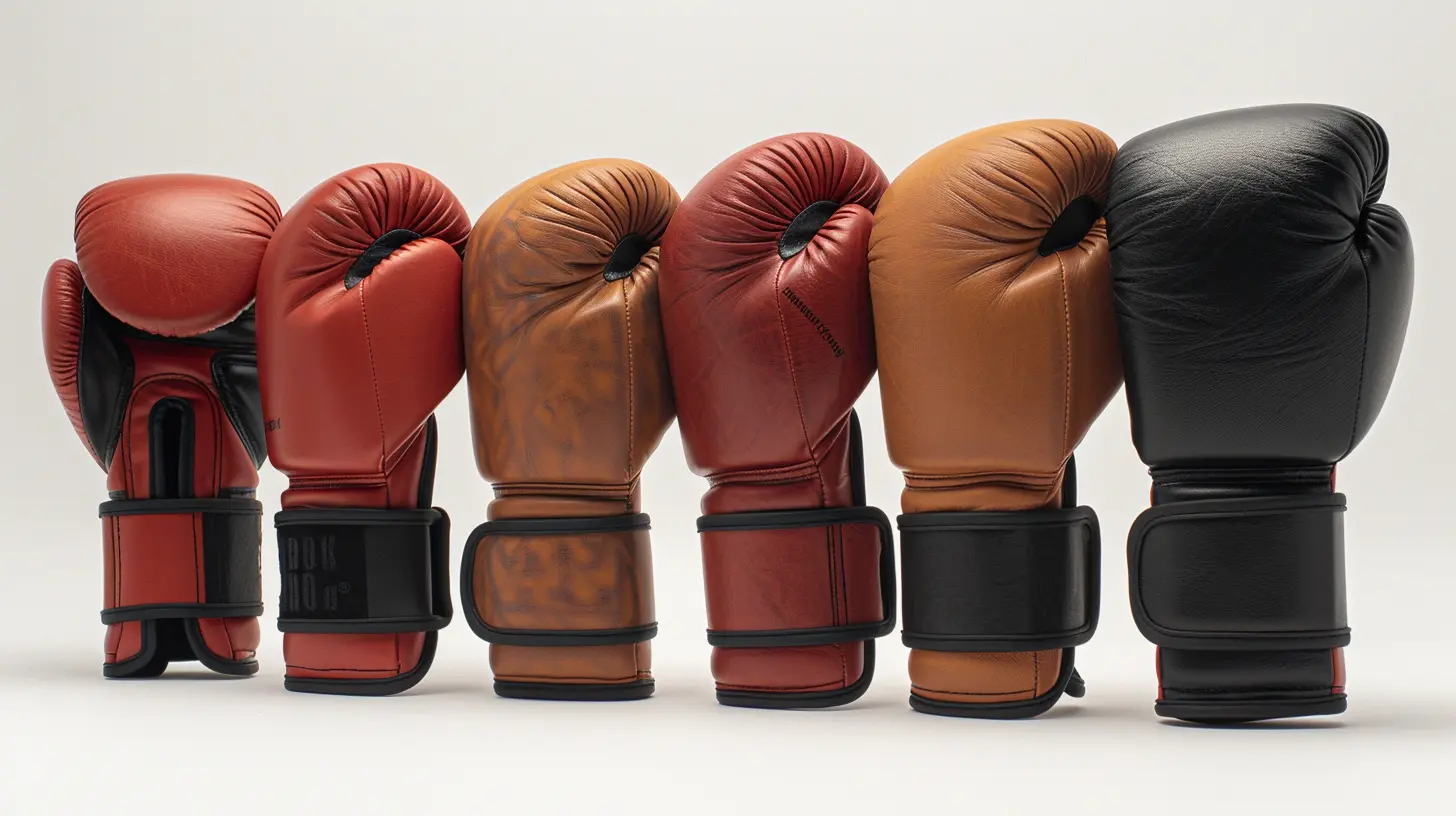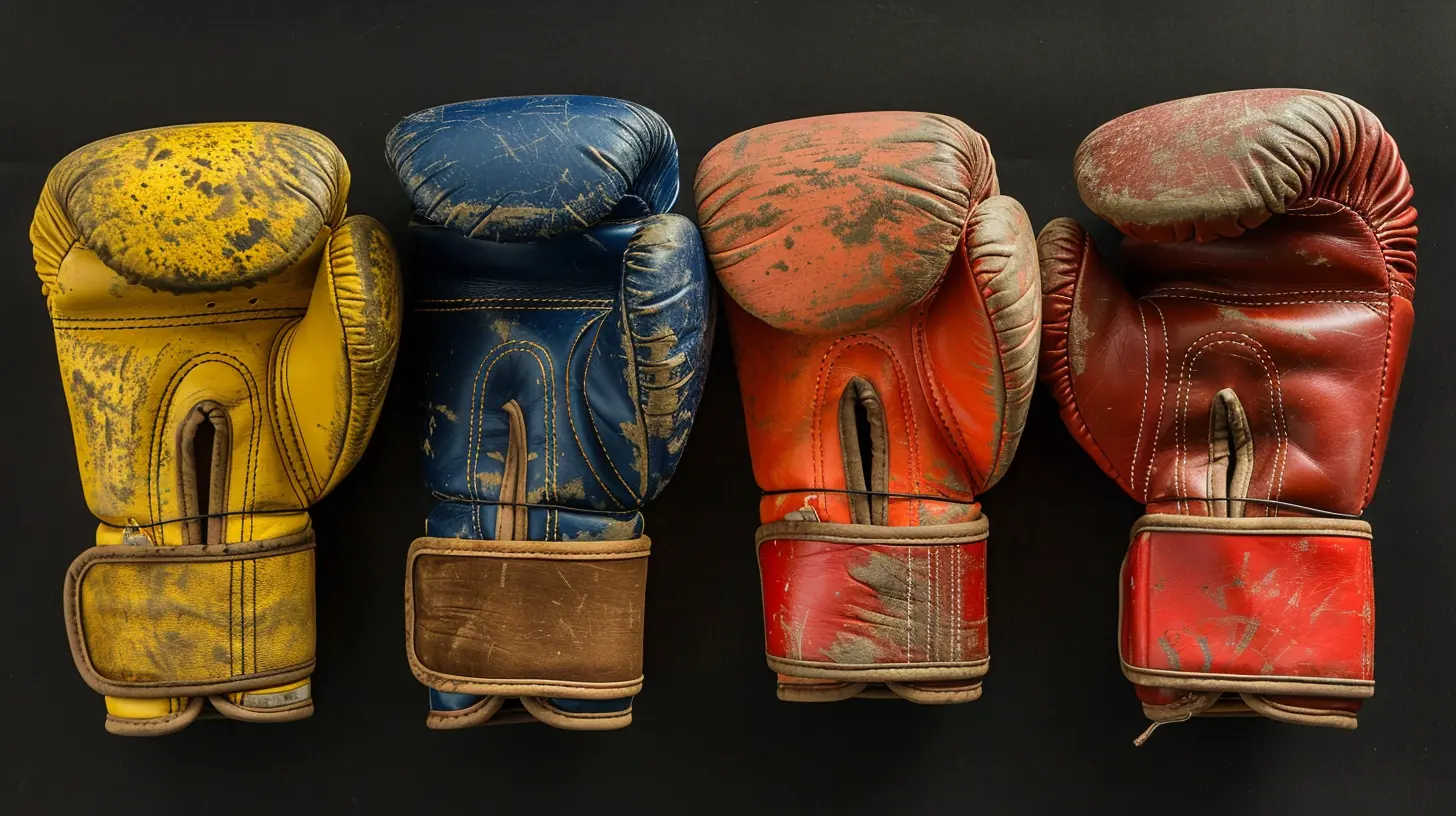Choosing the Right Boxing Gloves: What You Need to Know
23 November 2024
So, you’ve decided to lace up and step into the world of boxing. Whether you're planning to spar in the ring, hit the heavy bag, or just get a solid workout, one of the first things you'll need is a good pair of boxing gloves. But with so many different types, sizes, and brands out there, how do you know which ones are right for you? Don't worry—I’ve got you covered!
In this guide, I’ll break down everything you need to know about choosing the right boxing gloves. From sizes and materials to the different types of gloves available, you’ll walk away with the confidence to pick the perfect pair for your boxing journey.

Why Are Boxing Gloves So Important?
Before diving into the nitty-gritty, let's first talk about why boxing gloves are such a big deal. They're not just about looking cool (although that’s a bonus). Boxing gloves serve a critical function: they protect your hands and your opponent (or sparring partner) from serious injury.Imagine throwing a hard punch without gloves—your knuckles, wrists, and even your forearms would take a beating. Gloves help distribute the force of impact, reducing the risk of injury. Plus, they offer padding that helps minimize damage when sparring or working on the bag.
So, yeah, gloves are a big deal.

Types of Boxing Gloves
Not all boxing gloves are created equal. In fact, they come in various styles, each designed for specific activities. Let’s break down the different types of gloves:1. Training Gloves
Training gloves are your all-purpose gloves. If you're just getting started or need a pair for general use, these are for you. They’re versatile enough to be used for bag work, mitt drills, and even light sparring.- Who They’re For: Beginners or anyone needing a go-to pair for all-around training.
- Key Features: Good padding, wrist support, and typically come in various sizes and weights.
2. Bag Gloves
As the name suggests, bag gloves are specifically designed for bag work. These gloves are more compact and have less padding compared to sparring gloves, allowing you to feel your punches more, thus improving technique and power.- Who They’re For: Boxers focusing on heavy bag and mitt work.
- Key Features: Less padding, snug fit, and durable construction to withstand the constant impact of the bag.
3. Sparring Gloves
Sparring gloves are designed with extra padding to protect both you and your sparring partner. Unlike bag gloves, where you want to feel the punch, sparring gloves are all about protection.- Who They’re For: Boxers who are sparring frequently.
- Key Features: Extra padding, softer foam, and a larger size to reduce the risk of injury during sparring.
4. Competition Gloves
If you're planning on stepping into the ring for an official match, competition gloves are a must. These gloves are typically lighter and more compact, giving fighters a tactical advantage by allowing faster punches.- Who They’re For: Competitive boxers.
- Key Features: Lightweight, snug fit, and less padding compared to training and sparring gloves.
5. Muay Thai Gloves
Although not technically "boxing" gloves, Muay Thai gloves are often used in traditional boxing training. They’re more flexible around the wrist to accommodate clinching, a key element in Muay Thai.- Who They’re For: Those who cross-train in both boxing and Muay Thai.
- Key Features: More flexible wrist, balanced padding for both punches and clinches.

Understanding Glove Sizes and Weights
Another important factor to consider when choosing the right gloves is the weight and size. Boxing gloves come in various weights, typically ranging from 8 oz to 20 oz. So, how do you know which one is right for you? It depends on what you plan to use them for and, to some extent, your body weight.Common Glove Weights:
- 8 oz - 10 oz: Favored by professional boxers for competitions or fighters with smaller hands. These are also great for those who want a faster, more explosive punch.- 12 oz: Suitable for women or those with smaller hands; these gloves are also used for light training or mitt work.
- 14 oz: A common choice for general training and sparring.
- 16 oz (or higher): Ideal for sparring, especially if you’re a heavier fighter. The extra padding helps protect both you and your sparring partner.
The heavier the glove, the more padding it has. But keep in mind, heavier gloves can also slow down your punches, which is why many boxers opt for lighter gloves during competitions and heavier ones during training.
Size Guide:
Many glove brands will label their gloves by size (small, medium, large) as well as weight. Here’s a rough breakdown based on your body weight:- Small (8 oz – 10 oz): Recommended for people under 120 lbs.
- Medium (12 oz – 14 oz): Ideal for those between 120 - 180 lbs.
- Large (16 oz and up): Best for individuals over 180 lbs or those who need extra padding for sparring.

Materials: Leather vs. Synthetic
The material of your boxing gloves can impact durability, comfort, and price. Let’s take a look at the two most common materials:1. Leather Gloves
Leather gloves are the gold standard. They’re durable, breathable, and mold to the shape of your hand over time. While they’re pricier than synthetic options, they’re usually worth the investment, especially if you plan on training regularly.- Pros: Long-lasting, comfortable, and breathable.
- Cons: More expensive and requires a bit more maintenance (e.g., regular cleaning and conditioning).
2. Synthetic Gloves
If you’re looking for a more budget-friendly option, synthetic gloves (usually made from PU leather or vinyl) are a solid choice. They won’t last as long as leather gloves, but they’re still good for beginners or those who box casually.- Pros: Affordable and easier to find.
- Cons: Less durable, less breathable, and can become uncomfortable over time.
Lace-up vs. Velcro
You’ve got your size, weight, and material sorted out. Now, let’s talk about the closure. Boxing gloves come with two main types of closures: lace-up and Velcro.1. Lace-up Gloves
Lace-up gloves offer a snug fit and better wrist support, making them the go-to choice for professional fighters. However, they do require someone else to help you lace them up, which can be a hassle if you’re training solo.- Pros: Secure fit and excellent wrist support.
- Cons: Time-consuming to put on and requires assistance.
2. Velcro Gloves
Velcro gloves are the more convenient option for most boxers. They’re easy to put on and take off by yourself, making them great for training sessions. The downside? They don’t offer as snug of a fit as lace-up gloves.- Pros: Convenient and easy to use.
- Cons: Slightly less secure fit and wrist support.
Glove Fit: Comfort is Key
It might sound obvious, but how your gloves feel when you wear them is super important. A pair of gloves that don’t fit right can lead to discomfort, lack of control, and even injury.Here’s what to look for:
- Snug Fit: Your gloves should fit snugly but not so tight that your hands feel cramped. You want space for your hand wraps, but not so much space that your hands move around inside.
- Comfortable Padding: The padding should feel firm but comfortable. Over time, your gloves will mold to your hand, but they should still feel good right out of the box.
- Wrist Support: Make sure the gloves offer solid wrist support, especially if you’re doing a lot of sparring or heavy bag work.
The Importance of Hand Wraps
I know we’re talking about boxing gloves, but I’ve gotta quickly mention hand wraps. These are an essential part of your boxing gear. They provide extra support for your wrists, knuckles, and joints, making sure you don’t injure yourself when throwing those powerful punches.Always wrap your hands before putting on your gloves. Trust me, your hands will thank you later.
Final Thoughts
Choosing the right boxing gloves might seem overwhelming at first, but once you break it down, it’s really not that complicated. The key is to figure out what type of training you’ll be doing, find gloves that fit comfortably, and invest in good quality materials that will last.Remember, boxing is a journey, and your gloves are your most important tool. Choosing the right pair can make the difference between an injury and an enjoyable, productive session. So take your time, do your research, and don’t be afraid to try on a few pairs before making your final decision.
Ready to throw some punches? Now you’ve got the gloves to do it right.
all images in this post were generated using AI tools
Category:
BoxingAuthor:

Onyx Frye
Discussion
rate this article
18 comments
Tempest Thompson
Choosing the right boxing gloves is crucial for performance and safety. Consider factors like weight, material, and the type of training you'll be doing. A proper fit enhances comfort and protects your hands, ultimately improving your technique and reducing injury risk. Make an informed choice for the best results!
February 13, 2025 at 11:52 AM

Onyx Frye
Thank you for highlighting the importance of selecting the right boxing gloves! Your insights on factors like weight, material, and fit are essential for optimizing performance and ensuring safety. Great points!
Solenne McQuillen
Choosing the right boxing gloves is non-negotiable for any serious boxer. Don't skimp on quality or comfort—your performance and safety depend on it. Invest wisely, or risk getting knocked out, both in the ring and in your training.
February 1, 2025 at 12:13 PM

Onyx Frye
Absolutely! Quality and comfort in boxing gloves are crucial for performance and safety. Investing in the right pair can make all the difference in your training and fights.
Drift McKinnon
Great article! Choosing the right boxing gloves is crucial for both performance and safety. I particularly appreciate the emphasis on fit and padding types. For beginners, considering the glove's weight can also make a big difference in comfort and technique. Looking forward to more tips on gear selection!
January 26, 2025 at 5:22 AM

Onyx Frye
Thank you for your insights! I'm glad you found the article helpful, and I appreciate your emphasis on fit, padding, and weight for beginners. Stay tuned for more tips on gear selection!
Lara Turner
Selecting boxing gloves involves considering size, material, padding, and intended use for optimal performance.
January 22, 2025 at 12:25 PM

Onyx Frye
Absolutely! It's crucial to assess those factors for the best fit and function in your training and fights.
Callisto McClellan
Great insights! Choosing the right boxing gloves is crucial for both performance and safety. I learned the importance of fit and padding preferences based on training intensity. Thanks for sharing!
January 14, 2025 at 7:36 PM

Onyx Frye
Thank you! I’m glad you found the insights helpful. Choosing the right gloves can make a big difference in training. Keep up the great work!
Courtney McLean
Great insights! Thanks for sharing!
January 9, 2025 at 1:33 PM

Onyx Frye
Thank you! I'm glad you found it helpful!
Clarissa McGehee
Great article! Choosing the right boxing gloves is crucial for every fighter. With the right fit and style, you’ll be ready to unleash your inner champion. Keep punching! 🥊✨
January 5, 2025 at 12:11 PM

Onyx Frye
Thank you! I'm glad you found the article helpful. Choosing the right gloves truly makes a difference. Keep training! 🥊✨
Nico Bellamy
Choosing boxing gloves? It’s like picking a favorite child—only one can be a true champion! Stop settling for mediocre; your hands deserve the best. Gear up wisely and let those gloves do the talking in the ring!" 🥊✨
January 1, 2025 at 4:30 AM

Onyx Frye
Absolutely! Choosing the right boxing gloves is crucial for performance and protection—just like nurturing a champion. Invest wisely for the best results in the ring! 🥊✨
Fleur Reyes
Great insights! It's essential to consider weight, material, and fit when selecting boxing gloves for optimal performance.
December 28, 2024 at 3:43 AM

Onyx Frye
Thank you! I'm glad you found the insights valuable. Proper selection really makes a difference in performance!
Vance Jones
Great read! Choosing the right boxing gloves can make all the difference in your performance and safety. I loved the tips on sizing and material—definitely helps beginners and pros alike find their perfect fit. Can't wait to hit the ring with my new gloves! 🥊
December 22, 2024 at 8:42 PM

Onyx Frye
Thank you! I'm glad you found the tips helpful. Wishing you the best in the ring with your new gloves! 🥊
Iris Acevedo
Selecting the right boxing gloves transcends mere size and padding; it embodies the intersection of protection, performance, and personal connection. The gloves should not just fit your hands, but also resonate with your fighting spirit, amplifying both skill and confidence in the ring.
December 15, 2024 at 12:13 PM

Onyx Frye
Absolutely! Finding the perfect gloves is vital for both safety and enhancing your performance; they should empower your unique fighting style and boost your confidence in the ring.
Vanessa Harper
Picking boxing gloves is like dating—find the right fit, or you’ll end up with a real KO!
December 12, 2024 at 5:37 AM

Onyx Frye
Great analogy! Just like in dating, the right fit in boxing gloves is essential for comfort and performance.
Duke Ruiz
Great article! Choosing the right boxing gloves can make a significant difference in training and performance. I appreciate the tips and insights shared here; they’ll definitely help both beginners and seasoned boxers find the perfect fit for their needs.
December 1, 2024 at 9:45 PM

Onyx Frye
Thank you for your feedback! I'm glad you found the tips helpful for both beginners and experienced boxers. Happy training!
Hadley Wilcox
Choosing boxing gloves is like dating—find the perfect fit, avoid anything too heavy, and always remember: it’s all about protecting your heart (and your face) in the ring!
November 29, 2024 at 12:46 PM

Onyx Frye
Great analogy! Just like in dating, the right boxing gloves ensure comfort and protection, keeping you safe in and out of the ring.
Kendall Green
This article provides valuable insights into selecting the right boxing gloves. It's essential to consider factors like size, weight, and intended use to ensure safety and performance. I appreciate the emphasis on personal comfort, as it truly impacts training and sparring experiences. Great read for both beginners and seasoned boxers!
November 25, 2024 at 8:33 PM

Onyx Frye
Thank you for your insightful comment! I'm glad you found the article helpful and appreciate your emphasis on comfort—it truly makes a difference in training. Happy boxing!
Thaddeus McNair
Choosing boxing gloves is a lot like choosing a partner: they should fit snugly, offer good support, and ideally not leave you with a black eye after a tough round at the gym!
November 24, 2024 at 9:51 PM

Onyx Frye
Great analogy! Just like a good partner, the right gloves make all the difference in your training experience.
Emery McWilliams
Great insights on selecting boxing gloves! Comfort, fit, and purpose are crucial factors. A well-chosen pair can enhance performance and safety.
November 23, 2024 at 8:12 PM

Onyx Frye
Thank you! I'm glad you found the insights helpful. Comfort and fit really do make a significant difference in performance and safety.
Darrow Burton
Fit first, protection second.
November 23, 2024 at 4:40 AM

Onyx Frye
Absolutely! A proper fit is essential for comfort and performance, while protection ensures safety during training.
MORE POSTS

The Best CrossFit Workouts for Building Endurance

The Best Boxing Training Routines for Beginners

Why Set Pieces Can Be the Key to Football Glory

Can Drafting a Rookie Save a Teams Season?

How Professional Sports Athletes Prepare for Championship Games

The Anatomy of a Successful Draft Pick

The Role of Agents in Securing Blockbuster Transfers

Creating a Balanced Team Roster: Key Considerations

Fan Engagement Strategies that Drive Brand Loyalty

How Professional Athletes Use Social Media to Build Their Brand

Pre-Race Rituals: How to Prepare Mentally and Physically